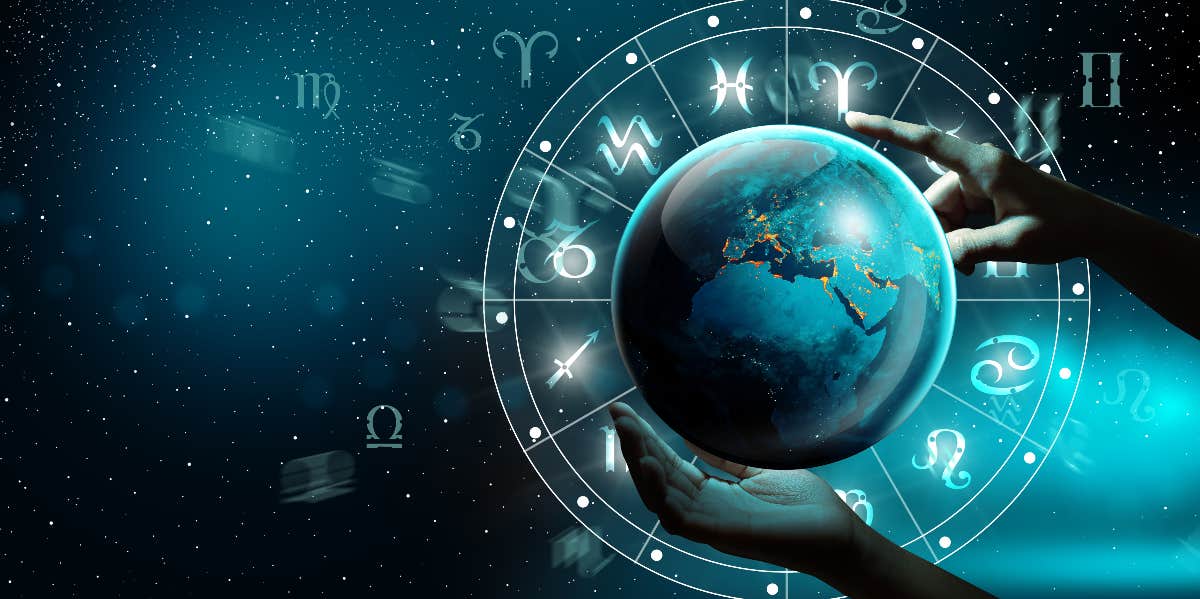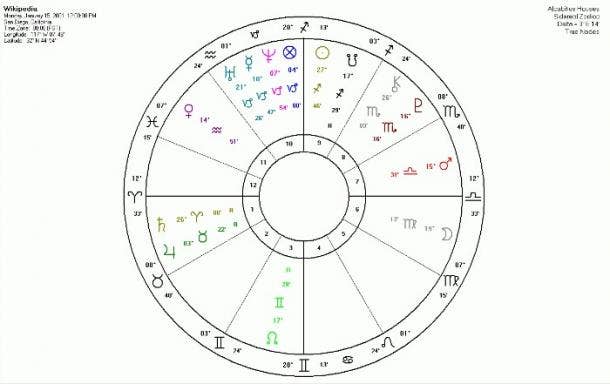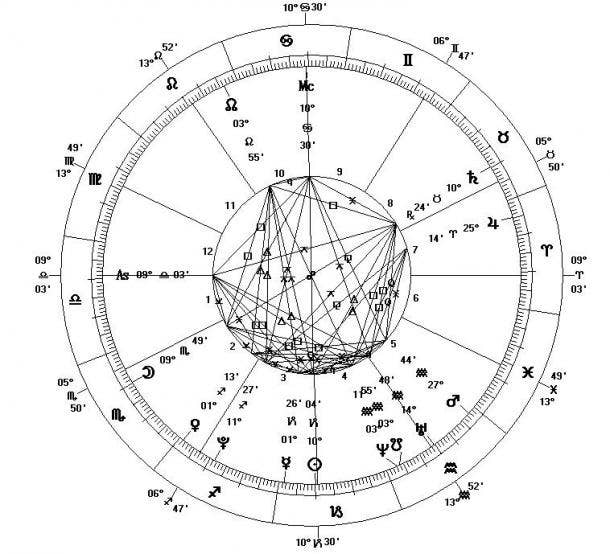
Often, it's cultural differences that denote the system you follow.
By Alice Kelly — Last updated on Jul 15, 2022
Photo: PeachShutterstock / Shutterstock

Did you know there’s more than one type of astrology in the world, or that these different types of astrology use completely different time-keeping systems?
Western astrology is the “mainstream” type of astrology and it uses the Tropical Zodiac, the one with the twelve signs that never change and that focuses primarily on Sun signs and their relationship to Earth.
But there are actually a lot of different astrological traditions — Vedic astrology, Burmese astrology, Tibetan astrology, Chinese astrology, and Indian astrology, just to name just a few.
These systems of astrology differ in a lot of ways, but most obviously in their measurement of time and the dates of each of the twelve zodiac signs.
What is Sidereal Astrology?
Sidereal Astrology observes celestial bodies and takes into account the movement of the stars in its zodiac chart. Astrologers often refer to these bodies as “fixed stars,” but Sidereal Astrology recognizes that these stars are not fixed at all.
 Photo: Wikimedia Commons
Photo: Wikimedia Commons
RELATED: 5 Core Facts About Astrology You Should Know (Other Than Zodiac Signs & Horoscopes)
Sidereal astrology also recognizes that the Earth sits on a skewed axis, further contributing to the changing distance between the stars and Earth. Hence, the Sidereal Zodiac uses corrective systems or equations known as 'ayanamsas' to precisely determine the position of each zodiac sign.
While different astrologers may use different ayanamsas, the most prevalent system is the Lahiri ayanamsa. Under this system, the Sidereal Zodiac recognizes an apparent backward movement of fixed stars of about 1 degree every 72 years from the perspective of the Earth.
Astrological systems that use Sidereal Astrology, such as Vedic astrology, tend to use these movements as a way of determining destinies.
When you were born, the planets and constellations were all in a certain placement. The planets, also known as the karmas of the soul in Vedic astrology, all play important roles in your past, present, and future life.
Your natal chart is a map of the planets and their exact position when you were born. Your chart can also tell you more about life events and possibilities for your future, as well as when these events may happen.
The Sidereal Zodiac is most commonly associated with Vedic or Hindu astrology, but it also has influence over Burmese astrology and Ancient cultures — like the Egyptians, Persians, and Mayans.
RELATED: How To Defend Your Belief In Astrology When People Say It's Fake
Sidereal Astrology vs. Tropical Astrology
While the dates of the Sidereal Zodiac change over time, the Tropical Zodiac does not. This is because Tropical systems fix the Vernal Equinox at 0 degrees of the Aries constellation, using this as the starting point of the Zodiac, and define the rest of the signs in relation to this.
Tropical Astrology does not use any ayanamsas or any equivalent in order to account for the precession of the equinoxes.
 Photo: Wikimedia Commons
Photo: Wikimedia Commons
In other words, the Tropical system of astrology is based on a fixed map of where the stars were when Western astrology began around 3,000 years ago, while Sidereal Astrology follows the current position of the stars.
Because of this, the zodiac dates and signs in our Tropical birth charts do not change. Hence, the Tropical Zodiac tends to be more focused on the here and now.
This form of astrology rules our core values and sensibilities and attempts to explain how we react to the world around us.
RELATED: 21 Best Astrology Books For Zodiac Fans & Beginners
Sidereal Astrology is more technical than Tropical Astrology.
It's important to note that both Western astrology and Vedic astrology are valid systems when determining your birth chart. Some people just prefer one over the other!
Often, it's simply cultural differences that denote the system you follow.
Sidereal Astrology is used in the Hindu tradition and influences several other spiritualities in the Southern hemisphere.
Tropical Astrology is typically associated with the Western world. Since it's influenced by the seasons, it's a more difficult system to apply to the Southern hemisphere where the seasons are flipped.
Then, of course, there is Western Sidereal Astrology that emerged in the 20th Century when Western astrologers caught on to the inaccuracies in the Tropical Zodiac. Western Sidereal Astrology uses the Sidereal Zodiac, but retains most of the other rules of Western astrology.
But Sidereal Astrology has its own faults.
The constellations do not accurately line up with the zodiac meaning and the Sidereal Zodiac doesn’t have one definitive chart of dates. Equally, the different ayanamsas used mean that different astrologers have opposing definitions of where the Zodiac begins.
The Thirteenth Sign in Astrology
While the Tropical system of astrology uses twelve signs, some definitions of the sidereal system contain thirteen zodiac signs. That’s the twelve zodiac houses we know and love, with the addition of Ophiuchus.
Ophiuchus is a constellation added to the sidereal system in 1995.
Related Stories From YourTango:
When the earliest astronomers charted the constellations that fit into 12 months of the year, Ophiuchus had no place in the Zodiac. However, thanks to the not-so-fixed stars and Earth’s wonky axis, those constellations have moved over the years, leading some astrologers to believe Ophiuchus may be more prominent than previously thought.
Again, choosing whether or not to count Ophiuchus as a zodiac sign is down to personal preference. It's omitted completely from the Tropical Zodiac, but even Vedic astrology ignores it in their sidereal system.
Considering there are 88 constellations in total, Ophiuchus isn’t the first constellation to be left out of the Zodiac, nor is it a “new” one. It was always there, astrologers just didn’t feel it had an influence over astrology.
Constellational astrologers, who base their practice solely off the constellations, are likely to include Ophiuchus in their chart, and other sidereal loyalists might also choose to add it to the mix.
The good thing about astrology is, unlike astronomy, there are no rights and wrongs.
If you think Tropical Astrology is inaccurate or outdated, you can make the switch to Sidereal Astrology. If you resonate with the traits of Ophiuchus, you can include it in your birth chart.
Or, if the sidereal system is confusing and messes with your astrology practice, you can stick to the Tropical Zodiac.
RELATED: How To Find Your Soulmate In Your Zodiac Sign's Natal Chart, Per Astrology
Alice Kelly is YourTango’s Deputy News and Entertainment Editor. Based in Brooklyn, New York, her work covers all things social justice, pop culture, and human interest. Keep up with her Twitter for more.
